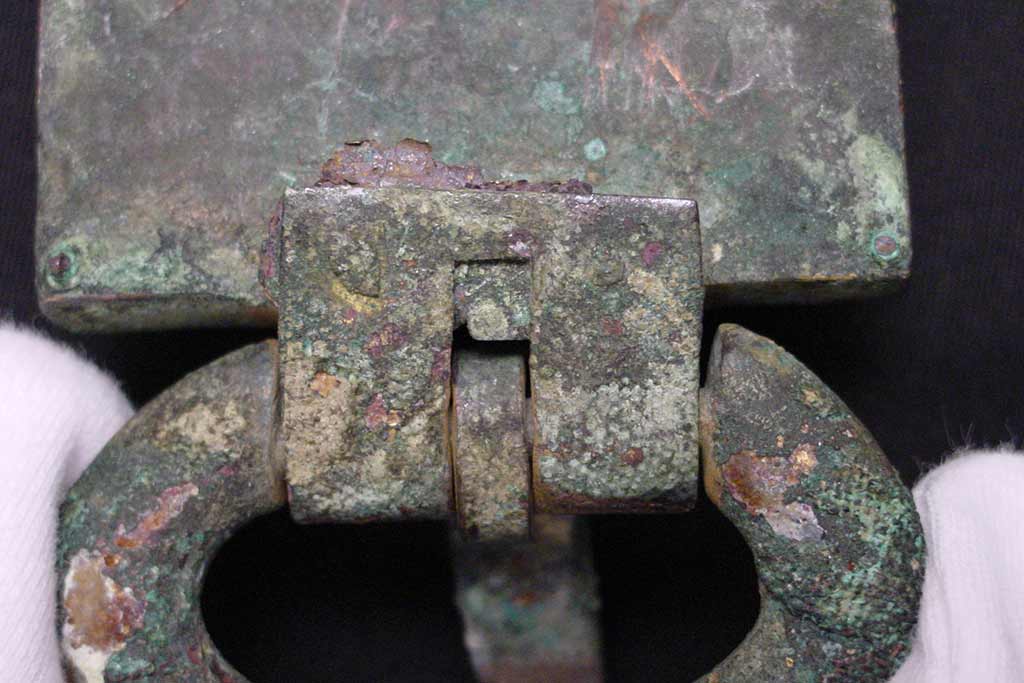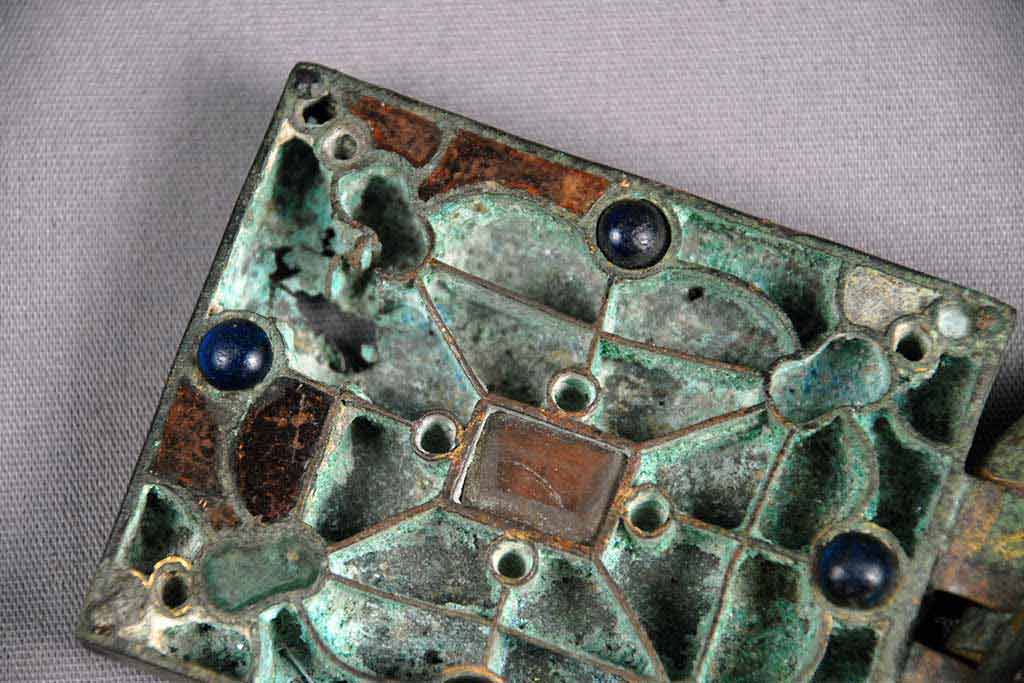
Featured Object: Visigoth Buckle
- Post Date: 01/31/2005
- Author: Jamie Walker
- Reading Time: 2 minute read
Much of the historical evidence we gain for the Early Middle Ages of Europe, or Dark Ages, comes from graves. One such example is this Visigothic buckle. This elaborately decorated artifact was discovered in the Frankish cemetery of Butte de Gargans and dates to the 6th century CE.
Butte de Gargans served as a burial ground for the Merovingian people. They were a tribe inhabiting modern day France from the end of the Western Roman Empire in the 5th century to the reign of the Carolingian monarchs in the 8th century, Charlemagne’s time. The Merovingians lived in a time of unrest and large scale migration, so it is difficult to find archaeological evidence of their social and cultural activity in temples or cities. The majority of knowledge about the Merovingian way of life derives from the grave goods found in cemeteries like Butte de Gargans.
This buckle is one of many different types of artifacts found in graves. Like other buckles of this type, it would have been found in the grave of a male warrior. Other objects would have included swords, other arms, goblets, and adornments. This buckle, however, is of interest because of its Visigoth origins.
This buckle has inlaid stones, and it would have been used to secure a leather belt worn over a person’s tunic. Unlike more simplistic bronze buckles worn in battle, this buckle would have been worn on less warlike occasions.
The Visigoth tribe was contemporary to the Merovingians and was one of the “barbarian” tribes that lived in Europe in the last years of the Roman Empire. The Visigoths were the western branch of the larger Goth tribe. At the time the buckle was made, the tribe inhabited Spain. How did this buckle end up in the grave of a Merovingian warrior?
Clearly, its inclusion in the grave implies that there was some sort of contact amongst these peoples. Despite the era’s labeling as a “Dark Age”, these tribes dealt with one another, and they had the ability to create elaborate goods like the buckle. Although they were often considered “barbarians”, the Goths had developed the art of creating decorative jewelry and accessories.
-
- Share: 𝕏
- Subscribe to Newletter
- Giving

